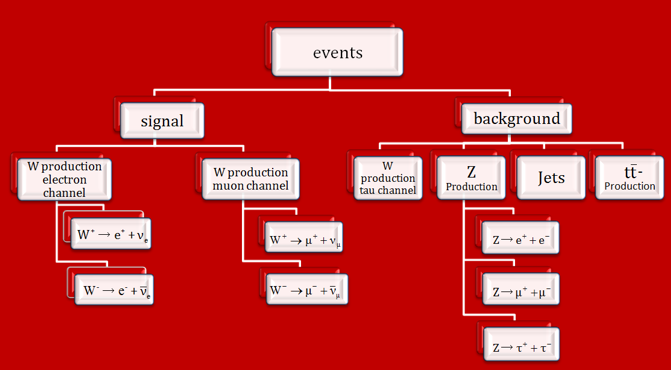W-path 3D
- Aims/Tasks
- Identifying Particles
- Identifying Events
- Measurement
- Data
- Structure of the Proton
- Search for the Higgs
- Analysis
Structure of the Proton
Protons are brought to collision in the LHC.
At high enough energies, protons do not react as a whole, only their constituent parts interact with each other.
This gives you the possibility to draw conclusions about the inner structure of the proton by analysing the products of the collisions.
The measurement task is to find and count all events in which a W particle was produced. The W particle decays into a lepton (electron or positron, or muon or anti-muon) and the accompanying neutrino.
We call these events signal events.
In addition you will see a lot of background processes.
Once you have done the measurement you can evaluate your results. How you do that is described here.
Task 1
Discover the structure of the proton!
Select all the signal events (events producing a W particle) from the 50 events of your data package. For these, you determine the electric charge of the W particle. After combining the results you determine the ratio of the number of positively charged W particles to the number of negatively charged W particles. We call this R±.The following outline gives you a better overview of all possible signal and background events:

In order to identify an event as a signal event you should notice the following criteria. It is really a signal event, if
- a missing transverse momentum (MET) of at least 20 GeV is provided in the event and
- there is exactly one lepton (either an electron or a positron or a muon or an anti-muon), which has a transverse momentum (PT) greater than 20 GeV and has an isolation value of less then 0.2.
Only if an event fulfills these two criteria, we are able to recognize that a W particle was created and thus we call it a signal event.